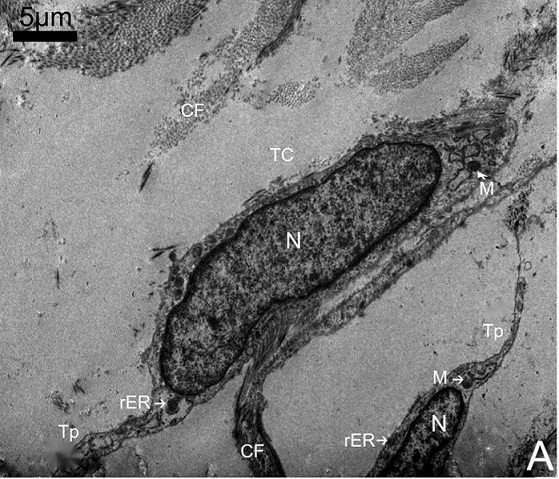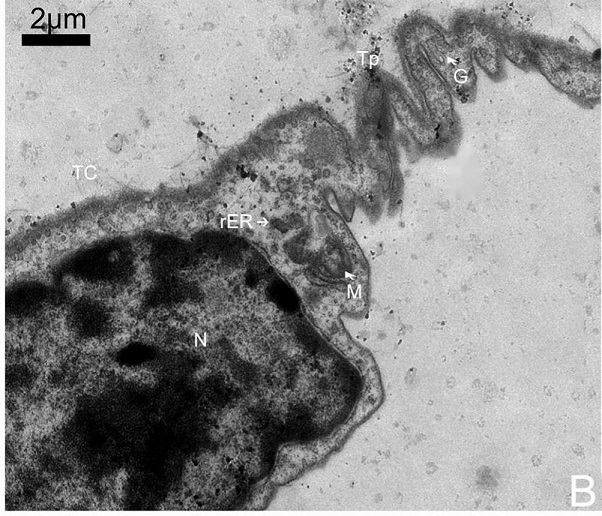Prognostic evaluation method for hepatocellular carcinoma through Telocytes
A technology of hepatocellular carcinoma and evaluation method, which is applied in the field of prognosis evaluation of hepatocellular carcinoma, and can solve the problems of high cost and long observation time.
- Summary
- Abstract
- Description
- Claims
- Application Information
AI Technical Summary
Problems solved by technology
Method used
Image
Examples
Embodiment 1
[0028] A method for evaluating the prognosis of hepatocellular carcinoma by Telocytes, comprising the following steps:
[0029] S1: Take postoperative tumor samples from patients with hepatocellular carcinoma, use high-speed crushing, high-speed grinding, high-speed stirring and supramolecular penetration technology in liquid solvents at room temperature to rapidly treat cancer cells in adjacent tissues within 1-2cm from the tumor The adjacent tissue was crushed and ground to fine particles, and the tissue cells with complete morphology were extracted. The tissue cells adjacent to the cancer cells were fixed in 4% paraformaldehyde buffer, embedded in paraffin in JB-P5 paraffin embedding machine and archived. , and then prepared 3 μm thick tissue sections with RM2016 pathological slicer. The slices were dehydrated in triplicate with xylene (15 min each time), dehydrated with pure ethanol twice (5 min each time), the ethanol gradient was 85% and 75% (5Min), and the slices were s...
Embodiment 2
[0035] S1: Take postoperative tumor samples from patients with hepatocellular carcinoma, use high-speed crushing, high-speed grinding, high-speed stirring and supramolecular penetration technology in liquid solvents at room temperature to rapidly treat cancer cells in adjacent tissues within 1-2cm from the tumor The adjacent tissue was crushed and ground to fine particles, and the tissue cells with complete morphology were extracted. The tissue cells adjacent to the cancer cells were fixed in 4% paraformaldehyde buffer, embedded in paraffin in JB-P5 paraffin embedding machine and archived. , and then prepared 3 μm thick tissue sections with RM2016 pathological slicer. The slices were dehydrated in triplicate with xylene (15 min each time), dehydrated with pure ethanol twice (5 min each time), the ethanol gradient was 85% and 75% (5Min), and the slices were stored in sodium citrate antigen extraction solution (ServiceBio: G1202, pH Incubate for 3 times in PBS (Servicebio: G0002...
Embodiment 3
[0041] S1: Take postoperative tumor samples from patients with hepatocellular carcinoma, use high-speed crushing, high-speed grinding, high-speed stirring and supramolecular penetration technology in liquid solvents at room temperature to rapidly treat cancer cells in adjacent tissues within 1-2cm from the tumor The adjacent tissue was crushed and ground to fine particles, and the tissue cells with complete morphology were extracted. The tissue cells adjacent to the cancer cells were fixed in 4% paraformaldehyde buffer, embedded in paraffin in JB-P5 paraffin embedding machine and archived. , and then prepared 3 μm thick tissue sections with RM2016 pathological slicer. The slices were dehydrated in triplicate with xylene (15 min each time), dehydrated with pure ethanol twice (5 min each time), the ethanol gradient was 85% and 75% (5Min), and the slices were stored in sodium citrate antigen extraction solution (ServiceBio: G1202, pH Incubate for 3 times in PBS (Servicebio: G0002...
PUM
 Login to View More
Login to View More Abstract
Description
Claims
Application Information
 Login to View More
Login to View More - R&D
- Intellectual Property
- Life Sciences
- Materials
- Tech Scout
- Unparalleled Data Quality
- Higher Quality Content
- 60% Fewer Hallucinations
Browse by: Latest US Patents, China's latest patents, Technical Efficacy Thesaurus, Application Domain, Technology Topic, Popular Technical Reports.
© 2025 PatSnap. All rights reserved.Legal|Privacy policy|Modern Slavery Act Transparency Statement|Sitemap|About US| Contact US: help@patsnap.com



